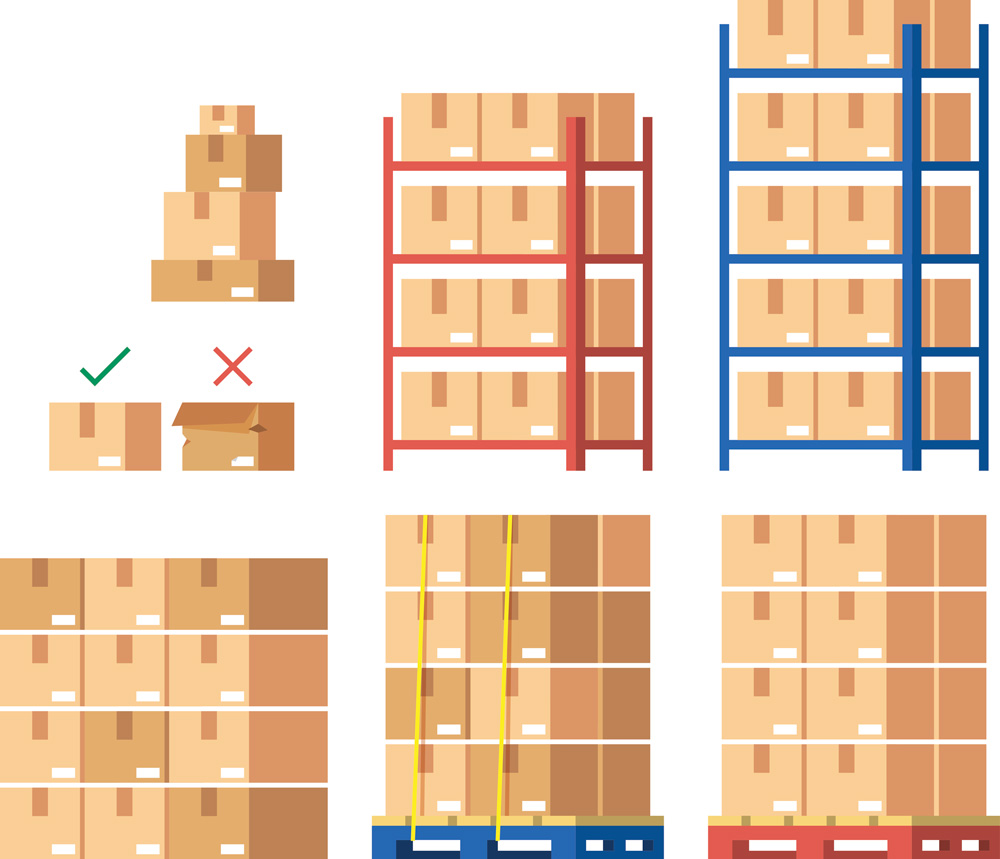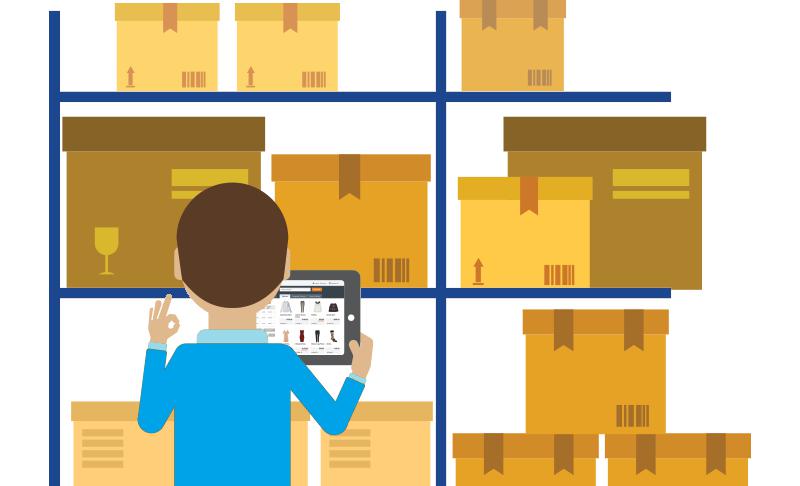To avoid theft and loss, the enterprises use control methods. Among the main ones is an inventory of inventories. What is she like?
general information
To assess the safety and correct execution of operations of the movement of inventories, an inventory of the inventories is used. It is also necessary in cases:
- Transformation of a municipal or state unitary enterprise, sale, repurchase, rental of property.
- When changing financially responsible person.
- Before preparing the annual financial statements.
- In case of unforeseen circumstances (flood, fire and so on).
- When reorganizing or liquidating an organization.
- In case of establishing the fact (s) of abuse, theft, damage to stocks.
- In case of another need, which is provided for by applicable law (for example, on the instructions of law enforcement agencies).
Here are the cases in which an inventory of the inventories is mandatory. The basis for its beginning is an order of the head of the organization (or another relevant document, for example, a resolution, order).
Inventory commission

Usually in large organizations, such a unit is constantly operating. It includes the head (or his deputy) in the role of chairman, chief specialists (chief accountant, department heads, legal adviser, head of security). If it is necessary to take an inventory, then a working commission is formed directly, into which all the necessary people are enrolled, whose jurisdiction is the area of work. Also, it often includes representatives of the internal audit service or specialists from independent firms.
If there is a small amount of work and there is an audit commission, then often an inventory is assigned to it. In the case when at least one member of the group was absent during the check, this gives reason to believe that the results are invalid.
Specific moment
When an inventory of the inventories is carried out, then a responsible person must participate in it. Although it should be noted that if it evades fulfilling its duty, then bringing it to justice will be quite problematic, since this is not defined by applicable law. In this case (if there is no good reason for this), the manager must appoint a new financially responsible person. When the audit is completed, it must, in the presence of the remaining members of the commission, accept the actually confirmed inventories for safekeeping, which is confirmed by its signature in the inventory sheet.
What happens in the process?

During the inventory it is necessary to solve a wide range of issues:
- Identify the actually present stock and compare the actual data with the indicators of accounting (financial, managerial) accounting.
- Check for conditions that contribute to the safety of inventories, the correctness of registration of their vacation and reception.
- Verify that inventory is correct.
- Check measuring facility.
During the inventory, the materially responsible person must provide the members of the commission with the latest documents as of the date of verification regarding income and expenses or a report on the movement of materials.In order to establish the correctness of the balances and prevent manipulations, the chairman marks these papers with the words “Before the start of the inventory on [date]”. Although this is a simple, but at the same time a very important step. From it begins the inventory of MPZ.
What next?

Then an inventory of available inventory items is carried out. That is, it is actually fixed in the appropriate units of quantity and amount of value. For comparison, information from accounting data is taken. Under each page it is necessary to indicate the serial numbers of the property and the total number of units of materials, as well as their monetary value. This approach eliminates the possibility of further input of additional information from a financially responsible person that distorts the result of the audit. After all, one should not forget that inventories are valuable resources. And the responsible person can use them for their own enrichment, trying to hide their crimes to the maximum (if they were committed).
What does an inventory look like?

In fact, the remaining balances are recorded after the calculation, weighing, measurement. The acts are attached to the inventory. If there are materials that are stored in bulk, then their physical weight or volume is determined using measurement and technical calculation. In the case of intact packaging, the contents are included based on these documents. But at the same time, selective verification of individual items is mandatory.
When carrying out these operations, materially responsible persons are required. This situation allows us to exclude in the future possible controversial issues. On the last page of the inventory, the chairman and members of the commission should make an entry as follows: “All prices and calculation of the results for the terms, pages and in general for the inventory list of inventory items are checked”. Signatures are used for certification. If this is not the case, then the inventory and revaluation of the inventories is considered invalid. If there is no objection on the part of the materially responsible person, then he also puts his signature.
Bureaucratic moments
The inventory inventory must be made in duplicate. One of them is transferred to the accounting department, where they compile a collation statement. The other remains with the financially responsible person. If the accountant has no objections after checking the calculations and data, then he signs in the inventory. Of particular note are the values that are on the way. When an inventory of the plant is carried out at the enterprise, they need to draw up a separate act.
What to do if an accountant has identified discrepancies?

It is impossible to ignore this. Therefore, a collation statement is drawn up (form No. INV-19). On its second page, existing data are displayed, as well as surplus / shortage, information is provided on resolving discrepancies. All this information must be certified by the signature of the accountant. The third page indicates additional information on surpluses, their spending, shortages and their coverage.
Let's look at a few examples of how an inventory of inventories might look.
Surplus / shortage identified
What to do in this case? How to relate to this? In the case when an inventory of the inventories was carried out and surpluses were identified, they should be considered as other income. How to arrange wiring? In this case, we are interested in debit 10, as well as credit 91 (sub-account 91-1). The first allows us to show that we are dealing with materials. A loan is necessary in order to show that this is other income. And if a shortage is detected? In this case, regardless of its nature, we need to use account 94. All shortages and losses from property damage are written off to it.
Disadvantages

We consider one more example. The inventory of inventories is being carried out. It was revealed that there is a shortage of material that was recorded at the actual cost of acquisition. In this case, it is necessary to use account 94 for debit, while credit - 10. Moreover, the second includes not only the actual cost of acquisition, but also the amount of transport and procurement costs. But you need to keep in mind that they relate to the contract value of the missing stocks.
If you just take into account the accounting (contractual) price of the stocks, then in this case the link debit 94, credit 16 will help. If the last account is not used due to certain organizational issues, then instead of 16 you can use 10. In this case, you should credit the amount transportation and procurement costs. This is how easy inventory is kept. Of course, initially for inexperienced it may seem complicated, but a little practice - and all postings will be made without problems.
Any arising shortages or damage must be written off depending on the reasons for their occurrence. It is very important. It is necessary to provide the head of the organization with all the information that will confirm what measures have been taken to compensate for material damage. Arbitration courts, law enforcement agencies, and responses from these structures can be cited as an example. In this case, the debit will be of interest to accounts 20, 23, 25, 26 (perhaps some more, depending on the situation), and credit - 94.
Conclusion

Of course, inventories are important for the operation of enterprises. And in order to avoid theft, loss and damage, you must carefully monitor the situation. But you should not be too zealous and constantly conduct checks. It is possible to envisage one planned inventory of the MPZ for a year and several more surface examinations per quarter. Although, of course, it all depends on the enterprise, the situation at it and a number of other points.
And finally, I want to consider another important nuance. When an inventory of the inventories at the warehouse is carried out and problems are identified, a comparison sheet is compiled. When analyzing its data, it is possible to identify a recalculation by individual names. Why does this occur? Re-grading is the result of the fact that the same names of materials come at different prices. The reason for this situation may be that when the materials were made from various raw materials, there were certain delays.
For understanding, consider a small example. Natural drying oil costs more than it, made of artificial material. One more example. A similar situation is observed for the same materials that have the same production purpose. Why different? And they have different characteristics. For example, a manufacturing need arose, and instead of 100 mm nails, 90 mm consumables were used. But they are cheaper! In this case, a positive sum difference arises.
